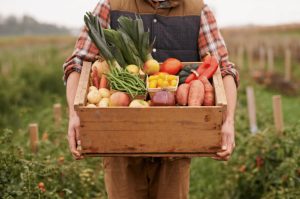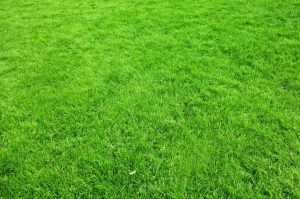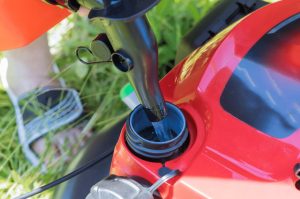Using Sydney’s unique climate to your advantage is essential for growing a healthy vegetable garden. Sydney’s temperate climate, with mild winters and warm summers, provides a great setting for various vegetables.
We highlight the veggies that flourish in Sydney’s conditions and provide professional recommendations for effective vegetable growing using a season-by-season breakdown. So, whether you’re a seasoned gardener trying to expand your repertoire or a novice eager to get your hands dirty, this thorough book is an excellent location to begin your vegetable gardening adventure!
Key takeaways
Maximize your garden’s potential in Sydney’s unique climate by focusing on what to plant each season. Here’s a quick guide to get you started:
- Spring (September to November): Focus on frost-sensitive veggies like potatoes, tomatoes, cucumbers, and beans. These thrive as temperatures rise and daylight hours increase.
- Summer (December to February): It’s time for heat-loving vegetables. Capsicums, zucchinis, and sweet corn are excellent choices that flourish in Sydney’s warm summers.
- Autumn (March to May): The cooler weather is perfect for leafy greens such as spinach and lettuce, along with root vegetables like carrots and radishes, which develop rich, full flavors.
- Winter (June to August): Opt for cold-tolerant veggies. Broad beans, peas, and onions are great options that can withstand the lower temperatures.
For a more detailed guide on what to plant and when, based on Sydney’s climate, check out our planting calculator below. This tool simplifies planning, helping you decide the best vegetables to plant each month for a year-round harvest.
Understanding Sydney’s climate
The climate in Sydney, which is located on Australia’s southeastern coast, is generally temperate, with mild winters and warm summers. The climate influences the varieties of vegetables that thrive at different periods of the year.
With temperatures ranging from 11 to 23°C, spring is ideal for growing frost-sensitive veggies. Consider potatoes, tomatoes, cucumbers, and beans; these kinds will thrive as temperatures rise and daylight hours increase.
Summer in Sydney is hot, with temperatures ranging from 18 to 28°C. Heat-loving vegetables thrive at this time of year. Capsicums, zucchinis, and sweet corn are excellent planting choices that will thrive in these conditions.
Autumn brings colder temperatures, with averages ranging from 14 to 22°C. These gentler circumstances are ideal for leafy greens like spinach and lettuce and root vegetables like carrots and radishes, which develop rich, full tastes.
Despite its mild temperatures ranging from 8 to 17°C, winter necessitates using cold-tolerant veggies. Plant broad beans, peas, or onions during this time of year since they can withstand the lower temperatures.
To summarise, Sydney’s environment allows for year-round gardening, as each season brings new food-planting opportunities.
Soil conditions in Sydney
The soil in Sydney varies widely, however some types are especially excellent for vegetable planting. Sandy soil, typical in coastal areas, drains easily but may require more minerals and watering. Composting can boost its nutritious content, especially during the hot months when cultivating heat-loving veggies.
Clay soil, common in the west, stores water and nutrients well but requires good drainage. Organic matter can help with this, which will boost autumn root vegetables. Loamy soil, a well-balanced blend of sand, silt, and clay, is suitable for most vegetables and can be planted yearly. Organic matter, regardless of soil type, can improve soil health and promote more productive plants.
The gardener’s dream, loamy soil, is the ideal balance of sand, silt, and clay. It has a high nutritional content, good moisture retention, and good drainage. Most veggies thrive in this soil type, making it ideal for year-round growing.
Remember that no matter what type of soil you have, adding organic matter can enhance its structure, fertility, and water-holding capacity, resulting in healthier, more productive plants. A well-managed soil is the foundation of any successful vegetable garden.
What vegetables to grow now in Sydney?
Understanding Sydney’s seasons can help you maximise your yield and enjoy a variety of fresh vegetables year-round. Use our planting calculator below if you can’t be bothered reading through all this information.
Simply plug in the month of the year, and our calculator will figure out what vegetables are best for planting during this specific time.

Sydney Planting Calculator
Now, let’s delve into what veggies you should be planting now!
Spring vegetables: September to November
Spring in Sydney brings a fresh burst of life to its gardens. With the increased temperature and longer daylight hours, this is a great time to plant various vegetables.
Here are some of our favourite items:

Asparagus
The ideal time to plant asparagus, particularly the “Mary Washington” variety, is at the beginning of spring. These perennials thrive in a sunny location with well-draining soil and consistent watering. With proper care, asparagus can produce bountiful harvests for several years.
Artichoke
For optimal growth, plant artichokes, especially the “Green Globe” variety, during spring. They require abundant sunlight, well-drained soil, and regular watering. Ensure ample spacing between plants to promote healthy development. Harvest the buds when they are firm and before the flowers begin to open for the best flavour.
Beetroot
Plant beetroot varieties like “Detroit” and “Golden” in early spring for vibrant, healthy crops. These vegetables flourish in well-drained soil under full sunlight. Maintain consistent soil moisture and thin seedlings to provide enough space for growth.
Harvest roots once they reach the size of a golf ball for maximum sweetness and tenderness. We recommend harvesting the roots when they have reached the size of a golf ball.
Carrots
Carrots such as “Nantes” and “Purple Dragon” thrive when planted in spring. For best results, ensure deep, sandy soil, full sun exposure, and steady watering. To avoid overcrowding, thin seedlings during early growth stages. Harvest carrots when they are firm, brightly coloured, and flavourful.
Celery
Spring is the ideal season to plant celery, particularly the “Tall Utah” variety. These nutrient-demanding plants perform well in locations with full sunlight or partial shade. To ensure optimal growth, incorporate generous amounts of compost into the planting hole. Regular watering is key to maintaining robust stems.
Harvest when the stalks are fully grown and firm.
Companion plants to consider planting in Sydney Spring
When it comes to companion planting in Sydney’s Spring, we recommend the following:
- Asparagus: Plant parsley and basil alongside asparagus. These herbs can help repel common pests while enhancing the soil’s nutrient content, creating a more conducive environment for asparagus spears to flourish.
- Artichoke: Sunflowers and tarragon make excellent neighbours for artichokes. Sunflowers can provide partial shade and wind protection, while tarragon helps repel pests and may improve the artichokes’ vigour.
- Beetroot: Onions and garlic are beneficial companions for beetroot, deterring pests with their strong scents. Leafy greens like lettuce also pair well, sharing space efficiently as they have different root depths.
- Carrots: Leeks, chives, and rosemary can help repel the carrot fly, a common pest for carrots. These aromatic plants mask the scent of growing carrots, keeping them safe from harm.
- Celery: Planting celery near beans and tomatoes can be advantageous. Beans help fix nitrogen in the soil, which celery benefits from, while tomatoes provide shade, reducing water loss for celery on hot days.
Summer vegetables: December to February
The summer season in Sydney offers ideal conditions for cultivating diverse vegetables. Here are our recommended plants for you to consider planting:
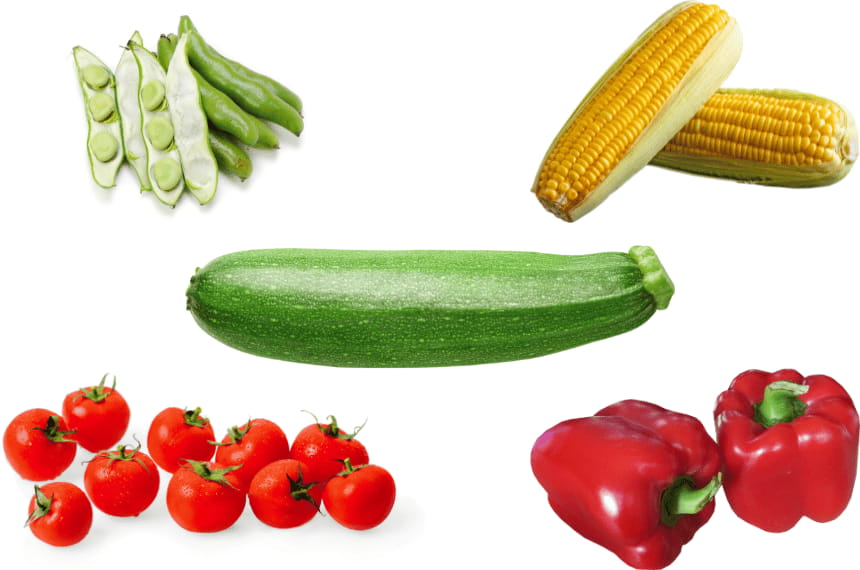
Tomatoes
The best time to plant tomatoes in Sydney is during early Spring, around August to early September. Two tomato varieties that thrive in Sydney’s climate are “Grosse Lisse” and “Cherry Tomato”. These plant varieties thrive in the sunny climate of Sydney and prefer well-drained soil. It is important to water your plants regularly.
Pro Tip: Avoid watering the leaves to prevent fungal issues, focusing instead on the base of the plant. Harvest tomatoes when they reach a vibrant red hue, indicating full ripeness and the best flavour.
Capsicums
Capsicums thrive well when planted in January. Due to their adaptability, the “Californian Wonder” and “Sweet Banana” are excellent choices for Sydney’s diverse climate. These plants thrive in a sunny location in the garden and require regular watering.
Harvesting Tip: Pick capsicums when the skin feels firm, and the color is bright and uniform, ensuring peak taste and texture.
Zucchinis
It is recommended to plant zucchinis at the beginning of summer. The “Black Jack” and “Golden” varieties are well-suited to withstand the high temperatures of Sydney’s summer season.
For optimal growth, enrich the soil with compost, provide full sun exposure, and water the plants frequently.
Harvesting Note: Pick the pods when they are firm, crisp, and slightly glossy for the freshest taste.
Beans
Planting beans during December and January is highly recommended. Purple King and Butter Beans thrive in the climate of Sydney.
We recommend planting the vegetation in a location that receives ample sunlight and ensures the soil remains adequately hydrated. The ideal time to harvest beans is when the pods are firm and crisp.
Sweet Corn
We recommend planting Sweet Corn varieties such as “Honey and Cream” and “Max” during the late spring to early summer season.
Provide them with ample sunlight and ensure they receive consistent watering.
When to Harvest: The corn is ready when the tassels turn brown, and the kernels are plump and slightly milky when pressed.
Companion plants to consider planting in Sydney Summer
Companion planting plays a crucial role in creating a harmonious garden ecosystem. By carefully selecting plants that complement each other, we can naturally repel pests, improve pollination, and boost plant growth.
Here are some companion plants to consider for your summer vegetable garden:
- Tomatoes: Basil not only repels flies and mosquitoes but is believed to improve the flavour of tomatoes. Marigolds also deter nematodes and tomato worms with their underground secretions and vibrant blooms.
- Capsicum: Parsley and basil attract beneficial insects that prey on pests threatening capsicums. Meanwhile,. Spinach provides ground cover, keeping the soil moist and cool, beneficial for capsicum roots.
- Zucchinis: Nasturtiums are a trap crop for aphids, drawing them away from zucchinis. Peas also improve soil nitrogen levels, which zucchinis love for their growth.
- Beans: Corn offers natural support for climbing bean varieties, allowing them to grow upward freely. Radishes can also deter bean beetles and serve as a quick harvest crop, efficiently using space.
- Sweet corn: Pumpkins or squash can be planted alongside sweet corn, providing ground cover that suppresses weeds and retains soil moisture. Additionally, Sunflowers attract pollinators and can act as windbreaks, offering protection to the corn.
Autumn vegetables: March to May
Sydney’s mild autumn weather provides ideal conditions for growing a variety of vegetables, including our personal favourites:

Broccoli
The ideal planting season for broccoli in Sydney spans from February to April. The “Green Sprouting” variety thrives in the mild autumn weather, making it a reliable choice. For the best results, plant broccoli in a location with ample sunlight or partial shade.
Enrich the soil with organic matter and water consistently to maintain healthy growth.
Harvest Tip: Pick broccoli when the heads are firm, tightly packed, and a vibrant green colour for peak flavour and nutritional value.
Spinach
Plant spinach in early autumn for a productive yield. The “Bloomsdale” and “Winter Giant” varieties are particularly suited for Sydney’s conditions. Spinach prefers partial shade and well-draining soil enriched with compost.
Ensure the soil remains moist, but avoid overwatering.
Growth Boost: Regularly harvest outer leaves to encourage continued growth throughout the season.
Lettuce
Autumn is the perfect time to plant lettuce varieties like “Buttercrunch” and “Iceberg.” These greens thrive in nutrient-rich soil and benefit from partial shade during the day to protect them from excessive sun exposure.
Keep the soil consistently moist and harvest the outer leaves as needed to encourage a steady supply of fresh produce.
Pro Tip: Mulching around the base can help retain soil moisture and suppress weeds.
Broad Beans
Broad beans, such as “Aquadulce” and “Crimson Flowered,” are ideal for planting in April. These robust plants prefer full sun and rich, well-drained soil.
Water regularly to support healthy growth and harvest the pods when they are plump and firm for the best flavour.
Did You Know? Broad beans also act as a natural soil improver, fixing nitrogen into the soil for future crops.
Cauliflower
Cauliflower varieties like “Snowball” and “Mini White” excel when planted in autumn. These plants require a sunny location, nutrient-rich soil, and consistent watering to produce high-quality heads.
Harvesting Note: Pick cauliflower when the heads are compact, bright white, and firm for a satisfying yield. Cover the heads with the plant’s outer leaves if needed to maintain their white colour.
Companion plants to consider planting in Sydney Autumn
Companion planting is a gardener’s strategy to naturally deter pests, attract beneficial insects, and ensure optimal growth conditions. Here are companion plant suggestions tailored for our autumn favourites:
- Broccoli: Chives and garlic planted near broccoli can repel common pests like aphids and caterpillars, thanks to their strong scents. Also, Dill and marigolds attract beneficial insects that prey on pests, providing a natural defence system for your broccoli.
- Spinach: Strawberries make great companions for spinach, as they do not compete for space and can help keep the soil moist. Meanwhile, Peas can enhance soil nitrogen levels, benefiting spinach’s growth.
- Lettuce: Radishes planted among lettuce can act as a trap crop for pests, drawing them away from your lettuce leaves. Additionally, when contained to prevent spreading, Mint can deter slugs and ants, keeping lettuce safe.
- Broad Beans: Potatoes can be good neighbours for broad beans, as they share similar soil and water requirements without competing for nutrients. Calendula and nasturtiums planted around broad beans can attract beneficial insects and repel pests.
- Cauliflower: Oregano and thyme can repel cabbage moths, a common threat to cauliflower. Celery can deter white cabbage butterflies and is a beneficial companion for cauliflower.
Winter vegetables: June to August
Winter in Sydney is an excellent season to plant a variety of vegetables that thrive in lower temperatures, such as:
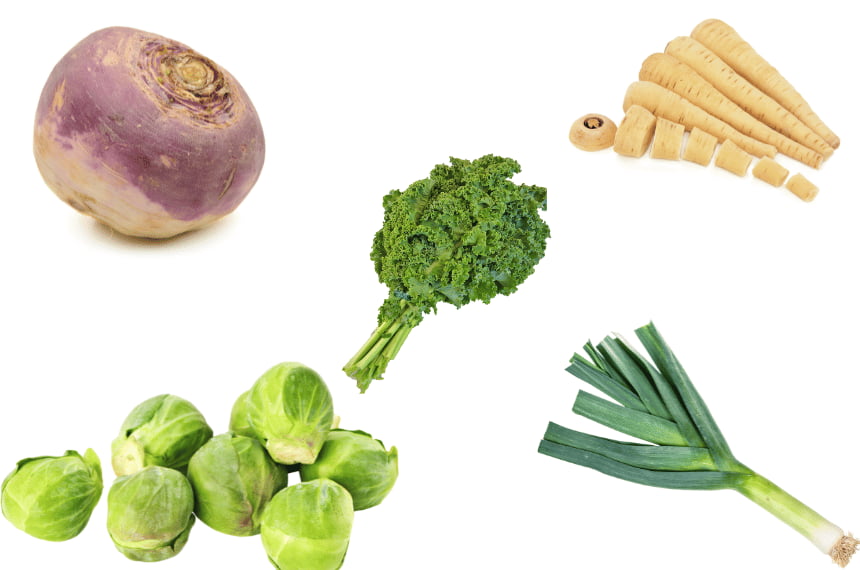
Kale
Kale varieties such as “Tuscan” and “Red Russian” thrive when sown early in winter. These hardy greens prefer a sunny or partially shaded spot with soil enriched by organic matter.
Harvesting Tip: Water regularly and begin harvesting leaves from the bottom up as the plant matures, ensuring a continuous yield of tender foliage.
Brussels Sprouts
For best results, plant Brussels sprouts, particularly the “Long Island” variety, in early January. These vegetables need full sunlight, nutrient-rich, well-draining soil, and consistent hydration.
Pro Tip: Harvest the sprouts when they are firm and roughly the size of a walnut, starting from the bottom of the stalk and working upwards.
Leek
Leek varieties like “King Richard” and “Bulgarian Giant” perform exceptionally well when planted in winter. Choose a sunny location with fertile, well-draining soil and keep the plants consistently watered.
When to Harvest: Pick leeks when they reach about an inch in diameter, ensuring a mild, sweet flavour ideal for soups and stews.
Parsnip
Winter is the ideal season to sow parsnips, especially the “Hollow Crown” variety. These roots thrive in full sunlight, deep, well-draining soil, and require regular watering to grow to their full potential.
Harvesting Advice: Wait until late winter or early spring to pull the roots, ensuring they are fully developed and flavourful.
Swede
Swedes, such as the “Best of All” variety, should be planted in late winter. They require a bright, sunny location, nutrient-rich soil, and regular watering to develop well-formed roots.
Harvesting Note: Pick swedes when the roots are medium-sized, as larger roots may become woody and lose their flavour.
Companion plants to consider planting in Sydney Winter
Companion planting in winter can provide essential pest control, improve plant health, and maximise the use of garden space. Here are some companion planting suggestions for your winter vegetables:
- Kale: With their strong scents, garlic and onions planted near kale can deter common pests like aphids and caterpillars. Chamomile can also improve kale’s flavour and attract beneficial insects to the garden.
- Brussels Sprouts: Thyme and mint (contained to prevent spreading) can repel cabbage moths, a common pest for Brussels sprouts.
- Leek: Carrots planted alongside leeks can mutually benefit by repelling each other’s pests: carrot flies from leeks and leek moths from carrots. Meanwhile, Celery can provide a beneficial partnership, sharing space without competition and deterring common pests.
- Parsnip: Peas can enhance soil nitrogen levels, which parsnips will appreciate for their growth. Radishes can also be sown among parsnips to break the soil, making it easier for parsnip roots to grow deep.
- Swede: Nasturtiums act as a trap crop for aphids, drawing them away from Swedes.
Tips for successful vegetable gardening in Sydney
Understanding the local climate, soil health, water management, and pest control are necessary to grow a flourishing vegetable garden in Sydney. Here are some pointers to help you produce veggies effectively in Sydney:
- Watering: Sydney has dry and humid seasons, so avoid overwatering plants. According to the NSW Government, using a drip irrigation or soaker hoses save water and try to schedule for the early morning or late afternoon.
- Pest control: Sydney’s lushness makes garden pests a problem. Use organic insecticides, beneficial insects, and physical barriers to safeguard your plants.
- Grow from seedlings: Tomatoes, capsicums, and eggplants do better as seedlings. These vegetables’ seeds may struggle to grow outdoors in Sydney’s weather.
- Keep a garden journal: Documenting your gardening journey might inform future seasons. Record planting dates, pest and disease challenges, and garden progress. Fun and useful.
- Soil health: To improve soil water and nutrient retention, buy good compost or organic matter. Composting regularly also encourages soil-fertilising bacteria.
Finally, gardening is a rewarding hobby that demands time and patience. Some plants develop more slowly than others, but the wait is worthwhile. Enjoy the process, learn from setbacks, and relish the satisfaction of producing your vegetables.
Strategies for growing veggies in small Sydney gardens
In the heart of Sydney, space is a luxury only some have. Yet, the dream of growing fresh veggies doesn’t need vast expanses of land. With innovative strategies, even the smallest of spaces can transform into a lush, productive garden. Here are some tips for Sydney gardeners looking to maximise their limited space for vegetable gardening.
Vertical gardening
Elevate your gardening game by going vertical. Trellises, wall planters, the Airgarden and hanging baskets are perfect for climbing plants like beans, peas, tomatoes and cucumbers. Vertical gardening saves space and adds an aesthetic appeal to balconies, patios, and small backyards.
Raised garden beds
Raised garden beds are a boon for small-space gardeners. They offer numerous benefits, making them an excellent addition to the strategies for growing veggies in compact areas:
- Improved soil conditions: Raised beds allow you to fill your garden with a custom soil mix, perfect for vegetable growing. This is particularly beneficial in urban areas where the native soil may not be ideal for gardening.
- Enhanced drainage: The elevated design of raised beds ensures better drainage, which is crucial for healthy vegetable growth. This prevents waterlogging, which can be detrimental to plant roots.
- Easier on the back: Gardening in raised beds requires less bending and stooping, making it more accessible for everyone, including those with mobility issues.
- Pest control: Raised beds can be easier to protect from pests. Adding a barrier around the bottom of the bed can deter burrowing pests, and the elevated soil level makes it harder for slugs and snails to reach the plants.
- Maximise space: You can create a highly efficient layout with raised beds. Intensive planting in raised beds means growing more vegetables in a smaller area than traditional row gardening.
- Aesthetic appeal: Raised garden beds can add structure and beauty to small gardens, balconies, or patios. To match your outdoor decor, they can be built from various materials, such as wood, stone, or metal.
Container gardening
Containers are a versatile option for small spaces. Almost any vegetable can be grown in a container, given its size. Choose containers that can accommodate the plant’s growth, from leafy greens to root vegetables. Ensure they have adequate drainage and are filled with high-quality potting mix for the best results.
Choose high-yield varieties
Select vegetable varieties known for their high yield and compact growth. Dwarf or bush varieties of tomatoes, zucchinis, and eggplants are ideal for small gardens. Leafy greens like spinach, kale, and lettuce can be harvested multiple times, providing a continuous yield.
Succession planting
Make the most of your garden space by practising succession planting. As soon as one crop is harvested, replace it with another. This method keeps your garden productive throughout the growing season, ensuring a steady supply of vegetables.
Interplanting
Interplanting involves growing quick-maturing crops alongside slower-growing ones. For example, radishes (fast growers) can be planted between rows of carrots (slow growers). This maximises space usage and can help deter pests.
Utilise edible landscaping
Incorporate vegetables into your existing landscape. Many vegetables, such as kale, Swiss chard, and herbs, are edible and decorative. They can be planted alongside flowers and shrubs, efficiently using all available space.
Balcony and window gardening
Don’t underestimate the potential of balconies and windowsills. Containers and window boxes can host a variety of herbs, greens, and even some smaller fruiting plants like chilli peppers and strawberries. Ensure they receive adequate sunlight and water.
Community gardening
If space is too limited at home, consider joining a community garden. These shared spaces offer a plot to cultivate your vegetables while connecting with fellow gardening enthusiasts. It’s a great way to learn, share, and enjoy gardening in a communal setting.
A productive vegetable garden is within reach even in the smallest Sydney spaces. You can enjoy the freshness of home-grown produce by choosing the right strategies and plants. Remember, gardening is not just about the yield—it’s about the joy of growing, the connection to nature, and the satisfaction of harvesting your own food, no matter the size of your garden.
Conclusion
Understanding the climate, knowing what to plant and when, and taking good care of your soil are the fundamentals of successful vegetable gardening in Sydney. Each season provides its own opportunities and problems. Still, with the appropriate attitude, you can have fresh, homegrown vegetables available all year.
Remember that each garden and gardener is unique; the trip may involve some trial and error, but the rewards are enormous!
Not in Sydney, be sure to check out our Melbourne planting guide or our rundowns for other areas such as Tasmania, Adelaide Brisbane, and Perth!
FAQs
What vegetables can you grow all year round in Sydney?
Sydney’s climate allows year-round vegetable growth. Parsley, chives, and rosemary are all-season herbs. As long as they’re shaded in summer, spinach and lettuce grow healthily year-round. Beetroot, radish, and silverbeet can be planted year-round.
What is the fastest-growing vegetable for Sydney?
Speed matters when you want to eat your harvest. Radishes grow in 4–6 weeks. Bok choy and mizuna can be harvested in 3–4 weeks after sowing. These vegetables are fast-growing.
What is the easiest vegetable to grow for Sydney?
Leafy greens are perfect for beginners and easy wins. Sydney’s easiest veggies to cultivate include lettuce, spinach, and kale. They’re low-maintenance and grow year-round. Parsley, mint, and basil are easy to grow and offer instant flavour to your kitchen.
What is the hardest vegetable to grow for Sydney?
Sydney gardeners enjoy artichokes and cauliflower. Artichokes are easy to grow but require more care than other vegetables. They’re pest-prone and need space to grow. Cauliflower likewise needs constant water and nutrients to create its white heads. Remember, difficult vegetables frequently provide the best harvests!
What techniques can extend the vegetable growing season?
Season extension techniques include using greenhouses, cold frames, cloches, and row covers to protect plants from cold and extend the growing season. These methods allow for earlier planting in spring and later harvesting in fall.
How can I practice organic gardening with my vegetables?
Organic gardening with vegetables means avoiding synthetic fertilisers and pesticides, instead using natural methods for fertilisation and pest control. Techniques include composting, organic mulch, and biological pest control methods.


